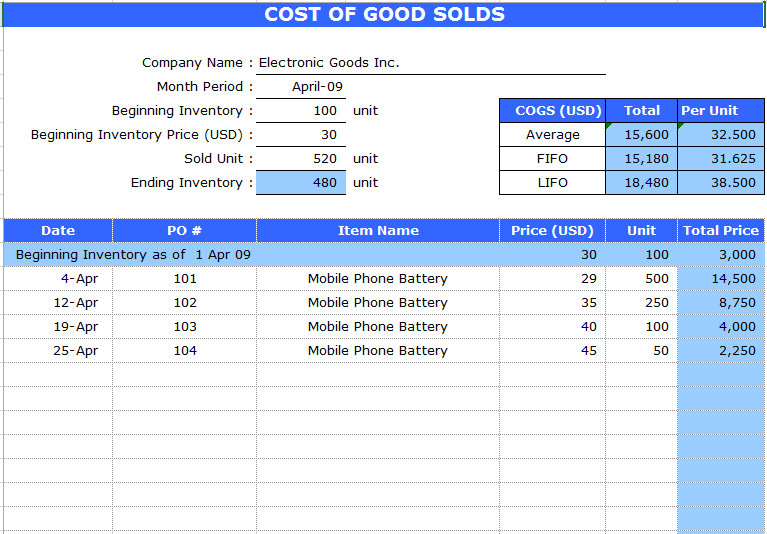
It tracks the company’s revenue, expenses, gains, and losses during a set period. The multi-step income statement provides an in-depth analysis of the financial performance of a business in a specific reporting period by using these profitability metrics. The single-step format is useful for getting a snapshot of your company’s profitability, and not much else, which is why it’s not as common as the multi-step income statement. But if you’re looking for a super simple financial report to calculate your company’s financial performance, single-step is the way to go. To calculate total income, subtract operating expenses from gross profit.
The four key elements in an income statement are revenue, expenses, gains, and losses. Together, these provide the company’s net income for the accounting period. The above example is the simplest form of income statement that any standard business can generate. It is called the single-step income statement as it is based on a simple calculation that sums up revenue and gains and subtracts expenses and losses.
- Single-step income statements can be used to get a simple view of your business’s net income.
- Precise financial records require proper categorization of expenses and revenues.
- Payment is usually accounted for in the period when sales are made or services are delivered.
- For example, revenue is often split out by product line or company division, while expenses may be broken down into procurement costs, wages, rent, and interest paid on debt.
Marketing, advertising, and promotion expenses are often grouped together as they are similar expenses, all related to selling. As you start preparing income statements, here are three factors to consider to make the process easier and ensure accuracy. Income statements can be prepared monthly, quarterly, or annually, depending on solvency ratios measure financial risk your reporting needs. Larger businesses typically run quarterly reporting, while small businesses may benefit from monthly reporting to better track business trends. Gross profit is what’s left of your revenue after deducting the cost of goods sold (COGS)—the direct costs related to producing goods or providing services. Revenue is all income generated by the sale of the business’ primary goods or services.
Firm of the Future
EBT, also referred to as pre-tax income, measures a company’s profitability before income taxes are accounted for. Non-operating revenues are revenues that a company earns from activities that are not related to its primary business operations. This is the profit before any non-operating income and non-operating expenses are taken into account. An income statement shows how effective the strategies set by the management at the beginning of an accounting period are. It is also known as the profit and loss (P&L) statement, where profit or loss is determined by subtracting all expenses from the revenues of a company.
Why are income statements important for small businesses?
The income statement serves as a tool to understand the profitability of your business. The income statement can also help you make decisions about your spending and overall management of business operations. Income statements should be generated quarterly and annually to provide visibility throughout the year. Consider enrolling in Financial Accounting or our other online finance and accounting courses, which can teach you the key financial topics you need to understand business performance and potential. Download our free course flowchart to determine which best aligns with your goals. If your business owes someone money, it probably has to make monthly interest payments.
Losses include money lost through activities outside of transactions for your primary goods or services. Accurate unique entity identifier update records of expenses, revenues, and credits are required for tax purposes and can help keep you in compliance with tax regulations. A business’s cost to continue operating and turning a profit is known as an expense. Some of these expenses may be written off on a tax return if they meet Internal Revenue Service (IRS) guidelines. Similarly, for a company (or its franchisees) in the business of offering services, revenue from primary activities refers to the revenue or fees earned in exchange for offering those services.
Income Tax
By conducting a horizontal analysis, you can tell what’s been driving an organization’s financial performance over the years and spot trends and growth patterns, line item by line item. Ultimately, horizontal analysis is used to identify trends over time—comparisons from Q1 to Q2, for example—instead of revealing how individual line items relate to others. This type of analysis makes it simple to compare financial statements across periods and industries, and between companies, because you can see relative proportions. It shows you how much money flowed into and out of your business over a certain period of time. Depreciation expenses are reported like any other normal business expense on your income statement, but where you include it depends on the nature of the asset being depreciated. This is how profitable your business is after subtracting all internal costs, which you have more control over, but before accounting for external costs like loan interest payments and taxes, which you have less control over.
The statement is divided into time wisenet wave periods that logically follow the company’s operations. The most common periodic division is monthly (for internal reporting), although certain companies may use a thirteen-period cycle. These periodic statements are aggregated into total values for quarterly and annual results.
Ask a question about your financial situation providing as much detail as possible. Our goal is to deliver the most understandable and comprehensive explanations of financial topics using simple writing complemented by helpful graphics and animation videos. Finance Strategists is a leading financial education organization that connects people with financial professionals, priding itself on providing accurate and reliable financial information to millions of readers each year. At Finance Strategists, we partner with financial experts to ensure the accuracy of our financial content.

How to Address Common Income Statement Mistakes
Listed companies follow the multiple-step income statement, which segregates the operating revenue, operating expenses, and gains from the nonoperating revenue, nonoperating expenses, and losses, as well as offering many more details. Operating Income represents what’s earned from regular business operations. In other words, it’s the profit before any non-operating income, non-operating expenses, interest, or taxes are subtracted from revenues. EBIT is a term commonly used in finance and stands for Earnings Before Interest and Taxes. Non-operating expenses are costs that are not related to a company’s core operations. “Other income/expense” is often included in this section and can include changes in the value of assets the company owns (if it owns shares in another public business for example).